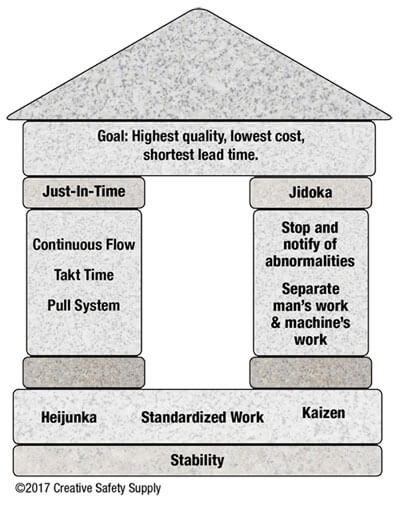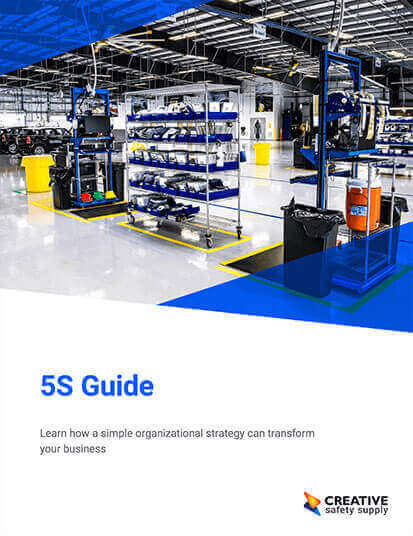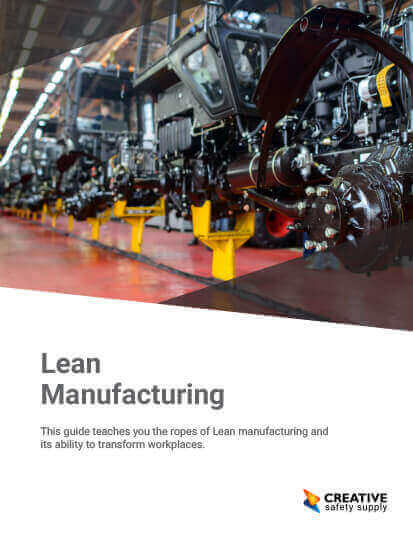
The Toyota Production System (TPS) is a cornerstone of lean manufacturing, designed to enhance productivity, eliminate waste, and reduce lead time. The primary objective of this structure was to design an efficient system through which high-quality products can be generated using less resources, less time, and less effort.
This resilient system is the reason why Toyota often fares better in terms of quality and quantity than most of its competitors. If efficient product quality and a reduced lead time are aspects your company struggles with, this comprehensive guide on the Toyota Production System will help you design an effective system that generates results.
The Pillars Of TPS
The entire foundation of the Toyota Production System is based on two key concepts:
Jidoka
The first pillar of Jidoka, in essence, means “automation with a human touch” and is based on the concept of stopping a process immediately when abnormalities or defects are detected to prevent faulty products from being produced. This tactic is designed to ensure productivity and eliminate the need for people to be simply watching over machines. By breaking the flow of defective products, companies can avoid wasting resources, labor efforts, and time.
How It Works:
Here’s a rundown of how Jidoka works in a lean manufacturing environment:
- Problem Detection: Operators are required to stop or hold the production line if they come across any defects or abnormalities during the production process.
- Prompt Inspection: Analyze what caused the abnormality in the first place, operators are required to hold the production process until a solution is found.
- Human Wisdom: Integrate the element of Jidoka into the process, conduct the production process by hand, implement the teachings of kaizen, and eliminate waste and insufficiencies to ensure each phase is simplified to its limit.
- Implementation: After assessing the work and determining the source of abnormalities, the next step is to input those sets of commands into actual machines to duplicate the product designed by hand.
- Final Observation: Oversee the initial stages of the redesigned system to evaluate whether a labor force is required to detect potential abnormalities.
Just-In-Time
The second-most crucial aspect of the Toyota Production System is Just-In-Time, which is based on the philosophy of “producing only what is needed when it is needed, and in the amount that is needed, at every stage of production,” as stated by Toyota itself. This methodology proposes limited inventory and the synchronization of all key phases along the streamlined value, from procurement to the final product, ensuring each phase transitions into the next in a continuous flow.
How It Works:
Here’s a rundown of how Just-In-Time (JIT) works:
- Minimizing Inventory: The main theme of Just-In-Time is to limit inventory storage to a minimum, preventing waste from accumulating and promoting a quicker response rate for customer demands.
- Synchronization: This step establishes the playground to facilitate a smooth, uninterrupted workflow of phases along the process, seamlessly transitioning to the next. Each product or resource must be present at the right time and place for this constant cycle.
- Supplier Integration: Just like Toyota, who works closely with suppliers for various model parts to ensure timely and efficient delivery, promoting a steady flow of resources that can be utilized.
- Focus on Customer Demand: Production should be solely focused on fulfilling customer orders rather than stocking up inventory in anticipation of customer demand.
Roots of the Toyota Production System
Now that you’ve gained an understanding of the two integral components of the Toyota Production System, here’s an overview of how it all began. TPS was created by two Japanese industrial engineers, Taiichi Ohno and Eiji Toyoda, who are renowned for being the founders of the Toyota Production System.
TPS is recognized as one of the major contributors to the development of Lean manufacturing and many other Lean concepts that people are familiar with today. No matter the type of facility being run, learning about TPS can help inspire innovation and prepare a company to implement a variety of workplace improvements. Under this structure, Toyota is recognized as a leader in the auto manufacturing industry, and most other manufacturers use the Toyota Production System at least in some fashion.
How The Toyota Production System Works
The Toyota Production System's foundation operates on combining two principles: Jidoka and Just-In-Time. The blend between these two components is the practical implementation of the Toyota Production System:
- Elimination of Waste: This system aims to eliminate all sorts of waste, including overproduction, waiting, inventory, transportation, overprocessing, defects, and inventory shortages.
- Critical Assessment: TPS focuses on evaluating current standard procedures, assessing the point of defects, and eliminating the root cause of deformities.
- Smooth Workflow: After evaluation, a new system is designed that does not pose the risk of defective products, ensuring a smooth and efficient flow of materials and information throughout the value chain.
- Pull System: Establishing a system of actual customer demand is required to avoid waste rather than forecasts, with parts and materials being ordered and utilized as per their need.
- Employee Empowerment: The TPS lean system fosters a culture of problem-solving where employees are encouraged to stop the production process if they observe abnormalities and identify common issues that impede the workflow in any form.
- Collaborative Effort: Toyota works in partnership with its suppliers to manufacture a seamless and consistent workflow.
TPS In A Diagram
The Toyota Production System helps bring improved organization efforts to a facility, reduces waste, and can improve the bottom line of companies that choose to adopt it.

Whenever learning about TPS, it’s common to visually depict the system as a house. A well-made home often still has to undergo renovations as time passes, whether that be because of outdated materials or broken appliances. TPS is made to achieve the same goals regarding updating old and worn-out systems for ones that are new and improved. Applying the Toyota Production System to any business model makes for “living” in that metaphorical house better for those within the organization.
Understanding Toyota Manufacturing
When trying to understand the Toyota way, it is important to look at some of the other concepts used within this methodology. The following examples were often developed based on
TPS, but they are now considered important aspects of it by many companies.
Lean Management
Lean management is a component of lean manufacturing, which has the overall goal of eliminating waste from the workplace. That includes wasted time, wasted products, and wasted services. Even small improvements that eliminate waste from a process can end up amounting to quite a bit over time. With that being said, Lean management specifically looks at how companies can operate better and what the management team can do to help.
Kaizen Philosophy
The concept of continuous improvement is so integral to TPS that it has its term. Kaizen is a Japanese term that means continuous improvement. While Kaizen strategies are certainly interested in finding ways to make large-scale improvements, they also focus on the little things. If Toyota can find a way to reduce the amount of physical waste created when making one car by just 1%, it would add up over time to be huge.
Kaizen Toyota isn't just about eliminating waste. It also looks to continuously improve the quality of the products that they make, and that starts with the company’s employees. From the CEO down to the assembly line worker, improving people will lead to an improved company. Those who are given proper training, encouraged to better themselves, and seen as a key part of a company are going to perform at a higher level. They will also be more likely to find problems and provide solutions to those issues.
The Kanban System
Kanban, the "Just-in-Time" manufacturing system of TPS, is a strategy for scheduling in the manufacturing process. Rather than having a massive inventory of each part that is required for the products being made, systems running the Kanban Toyota strategy will have only as many as are needed for a specific amount of time.
When the amount of a certain part is low, the Kanban system will alert the supplier so they can deliver more. When running perfectly, the new shipment will have the parts arriving at the production line where they are needed just as the last one was being used. Operating in this way allows a company to reduce the risk of being stuck with a large amount of a certain part if the demand suddenly dries up. It also eliminates the need to have large areas for storing these types of parts.
The 5S of The Toyota Production System
The Toyota Production System is not just based off alone two key principles alone, but rather has a strong foundation of additional concepts, including 5S lean methodology that is targeted around lean manufacturing and continuous improvement.
- Seiri: This means to sort or remove anything that is not necessary to the process. Seiri is the first of the 5 S's in 5S.
- Seiton: The second of the 5 S's is a term that means to organize. Keeping a facility organized is essential to eliminating waste.
- Seiso: The third S is to clean and/or inspect. Keeping a facility clean can help avoid many problems and inspecting work areas is an important way to identify problems and address them before they cause downtime.
- Seiketsu: This S means to standardize. Making sure things are done in the most efficient way possible no matter where the work is being done, who is doing it, or when, is the goal of this term.
- Shitsuke: Finally, the last S in 5S is to sustain. Many companies make improvements and then move on without doing anything to ensure the improvements are sustained over time.
Pros And Cons Of the Toyota Production System
Advantages:
Here are some benefits of implementing the TPS lean system in your company:
- Customer Satisfaction: The system is designed to put the customer first, and complete satisfaction is a by-product of its successful implementation. When customers receive products that are free from defects, brands generate a reputation for being defect-free, further contributing to the system's success.
- Reduces Waste: Extensive efforts and methodologies like Kanban, Kaizen, and 5S are utilized to eliminate waste and address shortcomings and bottlenecks to facilitate a system where every resource and time is utilized for profitable gains.
- Enhanced Quality: The essence of this system is based on identifying abnormalities using tools and techniques to deliver quality, defect-free products to the audience. This micro-management work fosters a culture of quality products in less time.
Disadvantages:
Knowing the pitfalls of the Toyota Production System can help you evaluate whether it’s a system designed to help your company prosper.
- Unrealistic Immediate Response: TPS suggests starting production based on customer orders rather than forecasts, making it impossible to respond to large inventory orders placed in bulk by the client. In regards to such meticulous work, products must be in progress or in storage which serves the opposite nature of the Toyota Production System.
Terminology + Tools Used in TPS
Most people quickly find that there are many unusual terms used in TPS. These are typically Japanese terms used to describe a specific concept or process that is important to the overall success of a project or system itself. Learning what some of these terms are and what they mean can help avoid a lot of confusion and other issues, both during the initial implementation and long into the future. Some of the most common terms used are:
- Andon: This term is literally translated into signboard and is used to describe a large board, often a TV or computer monitor, that is used to alert those in the area of a problem at a given location in the production process.
- Gemba: Gemba means "the actual place" and is used to describe a management concept where the supervisors have to spend time on the actual shop floor where the employees are working. This gives them a much better view of what is happening, what problems there are, and where the improvement opportunities exist.
- Muda: This is a general term that means waste. Muda is the first of the 3Ms regarding waste.
- Mura: Mura simply means unevenness and is a type of waste or defect in a product. It can also be used when discussing how different shifts or different people perform the same task differently.
- Muri: This means overburden. Overburdening a person, a machine, or anything else can lead to serious problems. Some companies are tempted to push people or things to their limits, but this only leads to unexpected problems over time.
There are many other terms used when discussing TPS as well. Many companies like to continue using the Japanese words when discussing these types of concepts because it can help set these ideas apart. While it may seem awkward at first, most people will quickly catch on to all of these different words and concepts.
Let TPS Be Your Foundation
The Toyota Production System is an excellent tool that can be utilized to develop a strategy for customer satisfaction and quality production with less effort and less time. If you’re convinced that TPS can help your company prosper, Creative Safety Supply offers a collection of resources that can make adapting this unique system into your own with ease.

